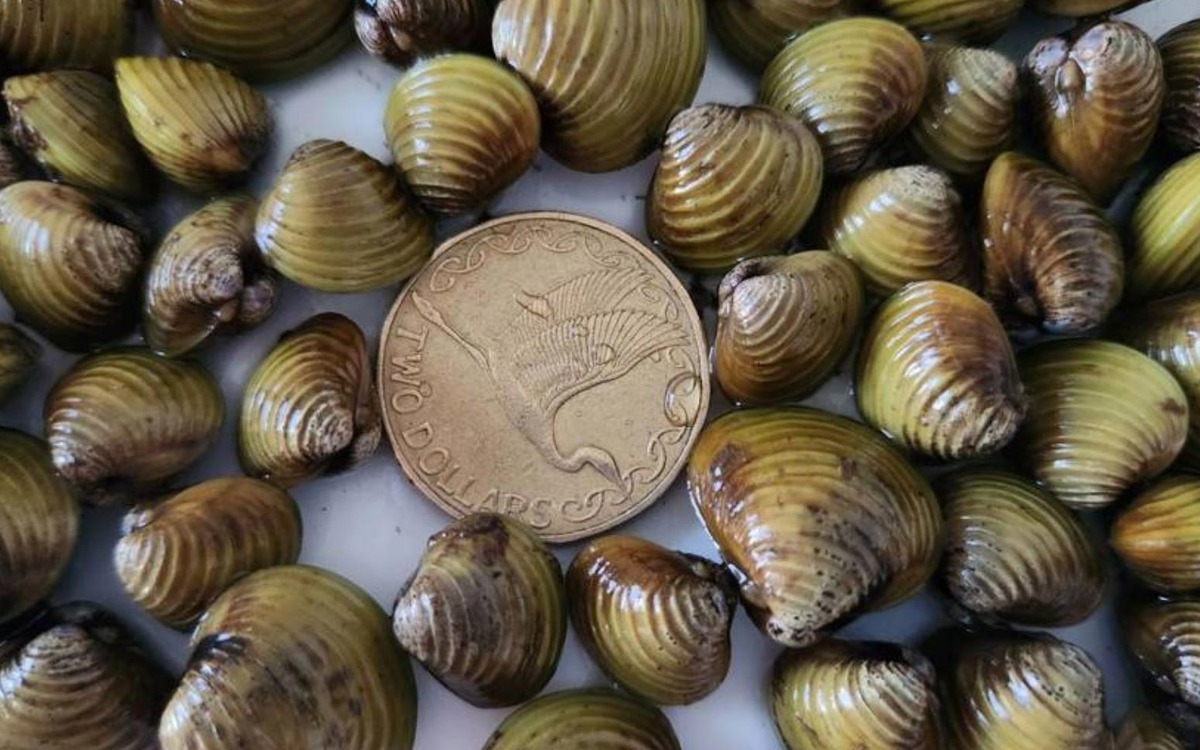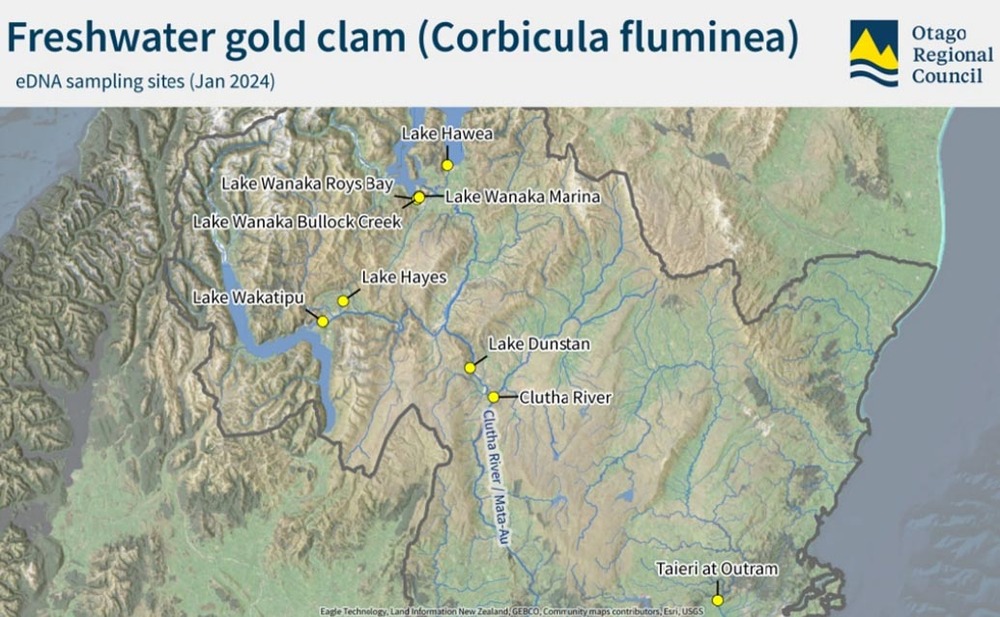Freshwater gold clam spread to South Island could be devastating
Aimee Wilson
18 November 2024, 4:45 PM
 The freshwater gold clam Corbicula fluminea. PHOTO Toitū Te Whenua Land Information New Zealand
The freshwater gold clam Corbicula fluminea. PHOTO Toitū Te Whenua Land Information New ZealandInland Otago lakes and rivers are at risk from the potential spread of freshwater gold clam - and a surveillance programme is underway to monitor the new invasive species.
The Otago Regional Council (ORC) said last week numerous freshwater systems in Otago were considered suitable for Corbicula fluminea colonisation.
But so far none have been detected in the South Island.
A report from staff to councillors outlined that the region’s lakes and rivers provided the temperature and nutrient conditions conducive to their establishment.
The new-to New Zealand freshwater clam was found in the Waikato River in May 2023 and in March 2024, a second species of exotic clam at the Lake Taupō Aqua Park.
“These species are considered to be highly invasive as they can spread quickly in rivers using water flows and are easily transported to new waterways via human activity,’’ the report said.
“They can out-compete and displace native and taoka[treasured] species, compromise water quality, clog and damage water infrastructure, such as hydroelectricity and municipal water, and impact tourism and recreational values,” the report said.
Regional council staff have proactively implemented a surveillance programme using water sampling for environmental DNA (eDNA).

Locations of eDNA water sampling for freshwater clams around Queenstown Lakes and Central Otago. PHOTO: SUPPLIED
The report said there was also competition with and displacement of native species such as Kākahi/Freshwater Mussel (Echyridella menziesii) and exacerbation of water quality issues by reworking sediment and releasing nutrients.
Dunstan ward councillor Gary Kelliher said it would be a disaster to have the clams in our waterways “as we have enough biosecurity issues currently blocking up screens for intakes, etc.”
There was also the potential of spread into South Island waterways from rowing crews taking their boats away to regattas and returning them, he said.
Other surveillance efforts included briefing the divers, engaged by Toitū Te Whenua Land Information New Zealand (LINZ) to manage invasive lagarosiphon in some of Otago’s high-risk lakes, to look out for Corbicula.
Freshwater clams could produce 400 juveniles per day and up to 70,000 juveniles per year, resulting in infestations reaching extremely high densities in optimal conditions and smothering benthic habitats with shells.
This has given Corbicula a reputation of one of the most prolific freshwater invaders worldwide.
Have a story to share?
Contact [email protected]

NEWS
PUBLIC NOTICES
JOBS
WHAT'S ON






